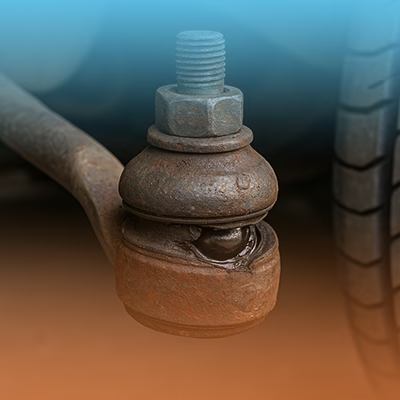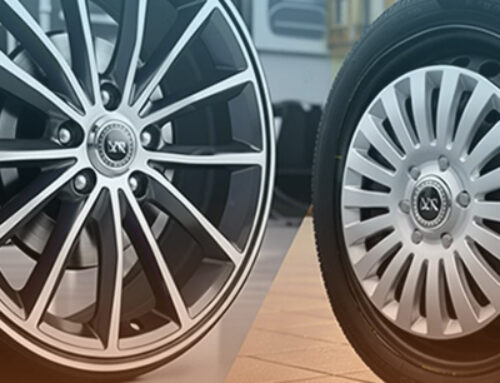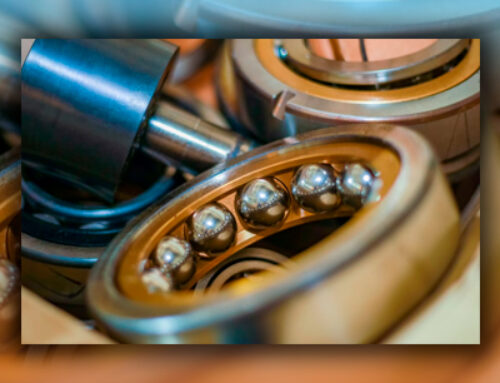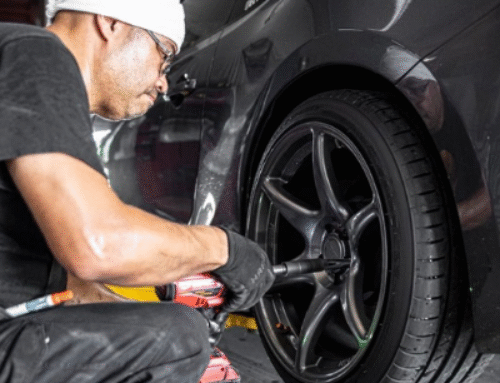What Are the Symptoms of Worn Tie Rod Ends?
Your vehicle’s steering system is more than just a wheel you turn—it’s a network of components working together to keep you in control. Among these, tie rod ends are essential for connecting the steering rack to the steering knuckle, allowing your wheels to turn smoothly and accurately. But like all mechanical parts, they wear out over time.
So, what are the symptoms of worn tie rod ends? Let’s break it all down.
What Is a Tie Rod End and What Does It Do?
Tie rod ends are small, jointed components found on the outer edges of your steering system. Their main role is to transmit force from the steering center link or rack gear to the steering knuckle, causing the wheels to turn.
There are typically two parts to a tie rod:
- Inner tie rod – Connects directly to the steering rack.
- Outer tie rod – Connects the inner rod to the steering knuckle.
Together, they allow for controlled steering, turning, and alignment.
If these components wear out, you may experience vague or loose steering, among other issues.
What Are the Symptoms of Worn Tie Rod Ends?
Recognizing worn tie rod symptoms early can prevent bigger problems later. Here are the most common signs:
1. Loose or Unstable Steering
One of the first bad tie rod end signs is loose steering. If your steering feels sloppy or requires constant correction, the tie rods could be worn.
2. Steering Wheel Shaking
Vibrations in the steering wheel, especially while turning or accelerating, often point to worn tie rods.
3. Clunking or Knocking Sounds
Hearing a clunk when going over bumps or making turns? This metallic sound can mean your tie rod ends are loose or damaged.
4. Uneven Tire Wear
Worn tie rods cause poor alignment, which leads to uneven or rapid tire wear. If you notice bald spots on the inner or outer edge of your tires, have your suspension checked.
5. Poor Wheel Alignment
If your car constantly pulls to one side, even after an alignment, bad tie rod ends may be the cause.
6. Steering Wheel Doesn’t Center
After making a turn, your steering wheel should naturally return to center. If it doesn’t, a failing tie rod end could be affecting the system’s ability to reset.
What Causes Tie Rod Ends to Wear Out?
Like many vehicle parts, tie rod ends wear gradually due to normal use. But certain factors accelerate the process:
- High mileage – Older vehicles are more prone to wear.
- Driving on rough or unpaved roads – Increases strain on suspension components.
- Hitting curbs or potholes – Sudden impacts can bend or break tie rods.
- Lack of lubrication – Some tie rods are sealed, but older or aftermarket types may need periodic greasing.
What Happens If You Ignore a Bad Tie Rod?
Driving with bad tie rod ends can lead to severe steering problems. In extreme cases, the tie rod can separate from the steering system entirely, resulting in a complete loss of steering control.
Ignoring these symptoms can also:
- Damage tires and suspension
- Affect vehicle alignment
- Increase the risk of accidents
How Are Worn Tie Rod Ends Diagnosed?
A professional mechanic will usually:
- Lift the vehicle to check for excessive play in the front wheels.
- Visually inspect the tie rod boots and joints for wear or damage.
- Perform a steering test to detect looseness or clunking.
- Check alignment to see if worn tie rods are affecting tracking.
You can also try this at home:
- With the car parked and the front wheels off the ground, grab a front tire and try to wiggle it side to side.
- If there’s noticeable play or knocking, your tie rods might be worn.
However, always confirm with a certified technician.
FAQs About Worn Tie Rod Ends
✅ Can I drive with a bad tie rod end?
➡️ It’s not recommended. Even if symptoms seem minor at first, a failed tie rod end can lead to dangerous handling and complete steering failure.
✅ Do I need an alignment after replacing tie rods?
➡️ Yes. Any steering or suspension work—including replacing tie rod ends—requires a wheel alignment to prevent uneven tire wear and ensure proper handling.
✅ Should I replace both tie rods at the same time?
➡️ Many professionals recommend replacing both sides for balanced performance, especially if one side is already failing.
✅ How long do tie rod ends usually last?
➡️ They can last anywhere from 50,000 to over 100,000 miles, depending on your driving habits and road conditions.
✅ How do I know if my tie rods are the problem and not something else?
➡️ Other steering issues, like worn ball joints or control arms, can mimic bad tie rod symptoms. That’s why a professional diagnosis is essential.
Understanding what are the symptoms of worn tie rod ends is essential for staying ahead of serious steering issues and ensuring your vehicle remains safe to drive. From clunking noises to vague or unstable steering, these red flags should never be overlooked.
If you’ve noticed strange behavior in your steering or unusual sounds coming from the front of your car, worn tie rod ends could be to blame. These small but critical components play a major role in your vehicle’s handling and control. Identifying the signs early can help you avoid bigger problems down the road and maintain safe driving conditions.
If you suspect any of these symptoms, don’t delay. Have your vehicle inspected by a trusted automotive professional to confirm the diagnosis and fix the issue before it escalates.
Maintaining your vehicle’s steering system—especially components like tie rod ends—is essential for safe and responsive handling. But ensuring your car stays in top shape requires attention to more than just one area. From routine checks to preventative care, there are key habits every driver should follow.
Want to take better care of your vehicle overall? Don’t miss our article: Tips to Keep Your Car in Good Condition.






